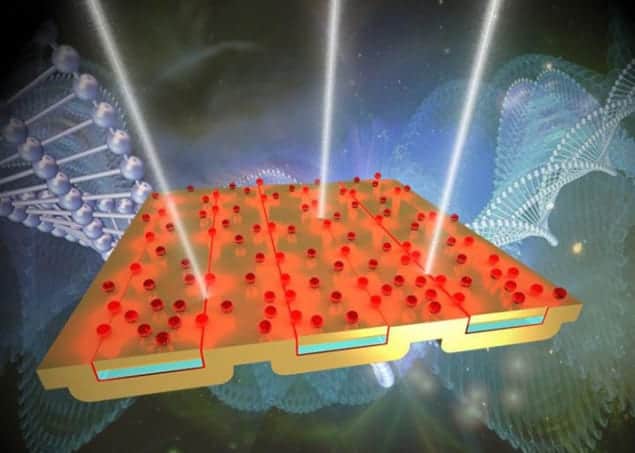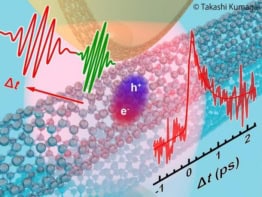
A new metamaterial nanostructure designed for infrared-based spectroscopy traps 27 times more light than similar devices. Developed by scientists in the US and China, the structure could be used to improve the detection of drugs, bomb-making materials and other chemicals.
Infrared absorption spectroscopy is used to identify chemical composition. It works by shining infrared light onto a sample and characterizing the molecules by the wavelengths that are absorbed. One version of the technique is surface-enhanced infrared absorption spectroscopy (SEIRA). Metallic nanostructures in the vicinity of a sample concentrate infrared light, resulting in a significant enhancement of the absorption process.
Reduce the gap
To further boost SEIRA performance, the gaps between the metallic nanostructures can be reduced to further confine the light. However, it is difficult to squeeze light – particularly the mid-infrared wavelengths used in SEIRA – with high efficiency into such small dimensions because of the conventional optical diffraction limit.
Now, Qiaoqiang Gan from the State University of New York at Buffalo in the US and colleagues have developed a promising solution – a metamaterial super absorber structure that acts as a substrate for sample chemicals. Made using atomic layer deposition, the corrugated metallic structure contains insulating gaps smaller than 5 nm. These trap light with 81% efficiency, compared to previous structures that have 3% efficiency.
Great potential
The team’s substrate can boost SEIRA such that it can detect molecules at 100 to 1000 times greater resolution than previous studies. “This new optical device has the potential to improve our abilities to detect all sorts of biological and chemical samples,” says Gan.
The work is presented in Advanced Optical Materials.



